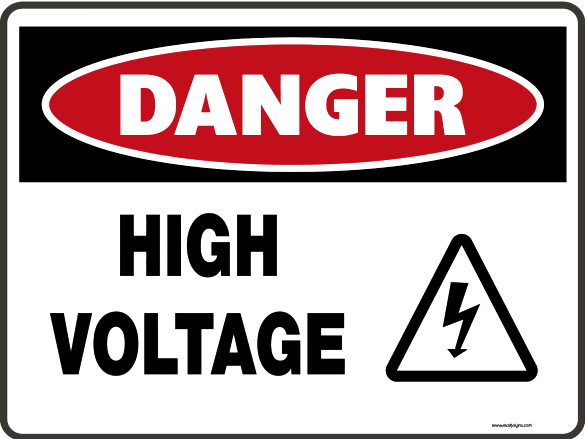Electrical Safety: A Hidden Danger Lurks In the Workplace

Electricity is all around us, yet most of us do not know the basics of how it works and the damage it can cause. Electricity can kill, it can cause fires, it can cause explosions. And all of this can happen within seconds. In addition to immediate dangers, improperly installed or maintained electrical boxes or appliances can be fatal months or even years later. It is therefore imperative that a certified electrician carries out all electrical work. And do not be shy about confirming the qualifications of the person performing the electrical work.
Three parameters can be used to explain a simple electric circuit. These are: voltage, current, and resistance. This relationship is referred to as Ohm's law, which states that V (voltage) = I (current) * R (resistance). Knowing 2 of these will give the 3rd value i.e. I = V / R, R = V / I.
Voltage: this is the ‘pressure' that forces electricity through the wire (or other conducting substance).
Resistance: this is a measurement of how much resistance there is as the electricity passes through. This is measured in ohms.
Current: this is the measurement of the rate of flow. It is measure in ampere or amp. Note that many times the measurement is in Milliamps (mA). An mA is one thousandth of an amp e.g. 1 mA = 0.001 A, and 1 A = 1000 mA.
Getting electrocuted can have varying effects, depending on the mA. For example;
- 0.5-2.0 mA will probably not even be felt.
- 2.0-10.0 mA will probably be somewhat painful.
- 10-60 mA will cause severe muscles contractions to the point that letting go of the object will be difficult and breathing may be impaired.
- Higher than 60mA will cause severe burns (both entry and exit), and possibly cardiac arrest.
There are additional factors to consider which can make an electrical injury worse:
- In addition to the mA, the voltage is also a factor.
- Duration of contact.
- Surface area of the body being electrocuted.
- AC or DC current.
- If the person is wet or is standing in water.
Examples of the formula (remember V = I X R):
- V = 230 V
- R = 1000 ohms
- therefore I(amps) = 230 V / 1000 ohms
- = 0.23 amps (or 230 milliamps)
- V = 110 V
- R = 100,000 ohms
- therefore I(amps) = 110 V / 100,000 ohms
- = 0.0011 amps (or 1.1 milliamps)
Safety Precautions
- Make sure you know the location of overhead and underground power lines.
- If there is digging use a cable locator to find buried wires then mark these findings clearly so all workers are aware.
- A certified electrician should ensure that there is no power to any areas where work is being done.
- If electrical work is being done it should only be carried out by a certified electrician, no one else should be assisting.
- If power can not be disconnected because equipment needs to be used make sure:
- Consult an expert as to the best way to proceed.
- All workers are aware of this.
- Place clear notices where there are live wires.
- All exposed wire ends should be covered with electrical tape.
- All electrical wires should be protected from damage by equipment or by workers walking.
- If using electrical equipment on the job check:
- For damages to the cord itself, as well as the plug and the area where it connect into the machine. Unplug BEFORE doing this check.
- Check for melted areas or burn marks on cords, and on machines, that suggests overheating.
- That the electrical supply is suitable for that piece of equipment.
- That the worker is trained to use that equipment and that they are using the required personal safety devices.
- Do not proceed if there is water in the area, or if it is raining and you are outdoors.
- Consider using a Residual Current Device, which reduces the seriousness of personal injury from electricity. But this device should only be used as extra precaution.
- Assure that no one is smoking, and that there are no flammable materials in the area.
- Reduce tripping hazards by taping down any wires.
Do not proceed with any work if something is not safe.
DO NOT TOUCH ANYONE THAT IS BEING ELECTROCUTED UNTIL THE POWER HAS BEEN TURNED OFF AT THE SOURCE!




Leave a Reply